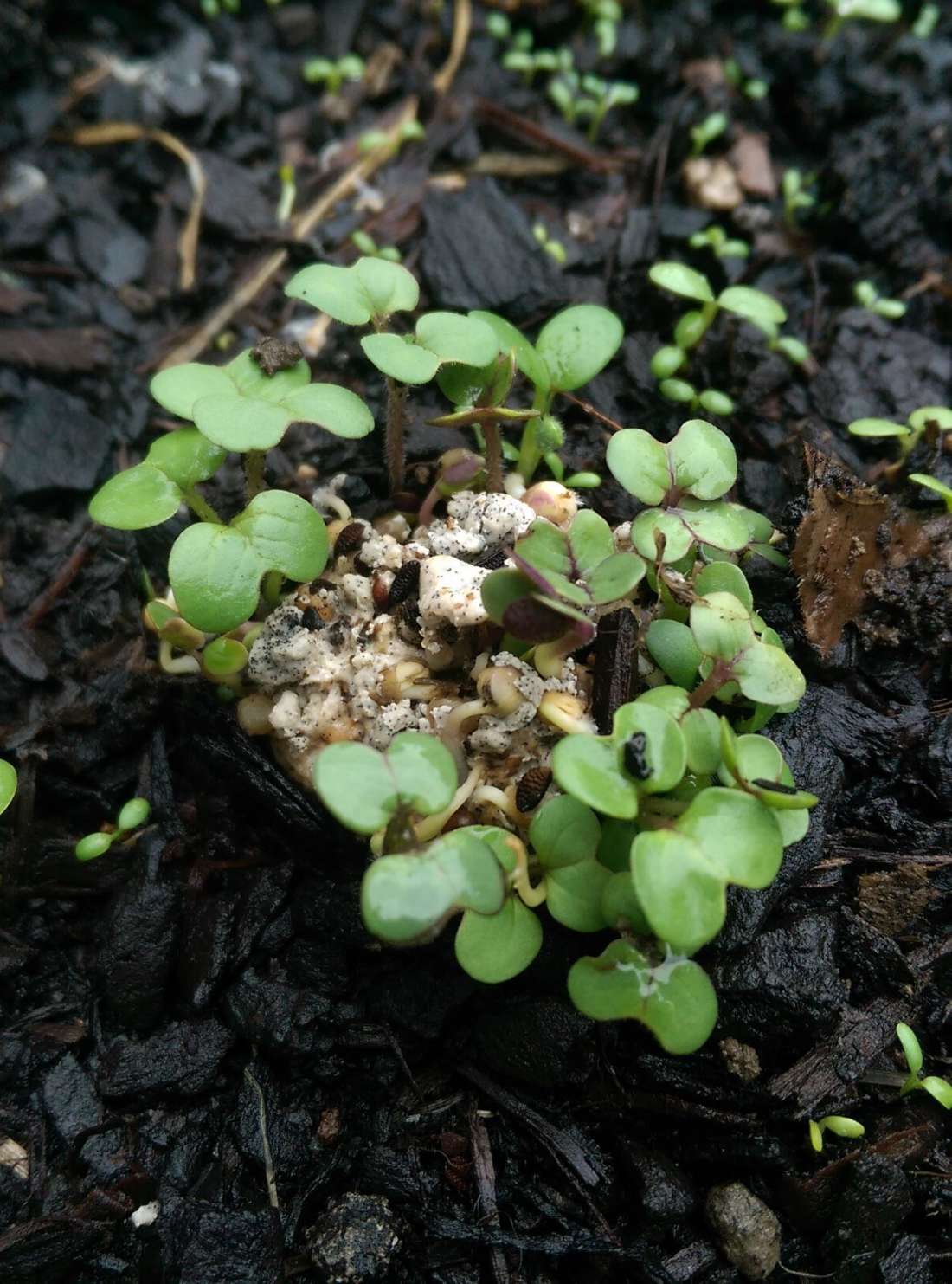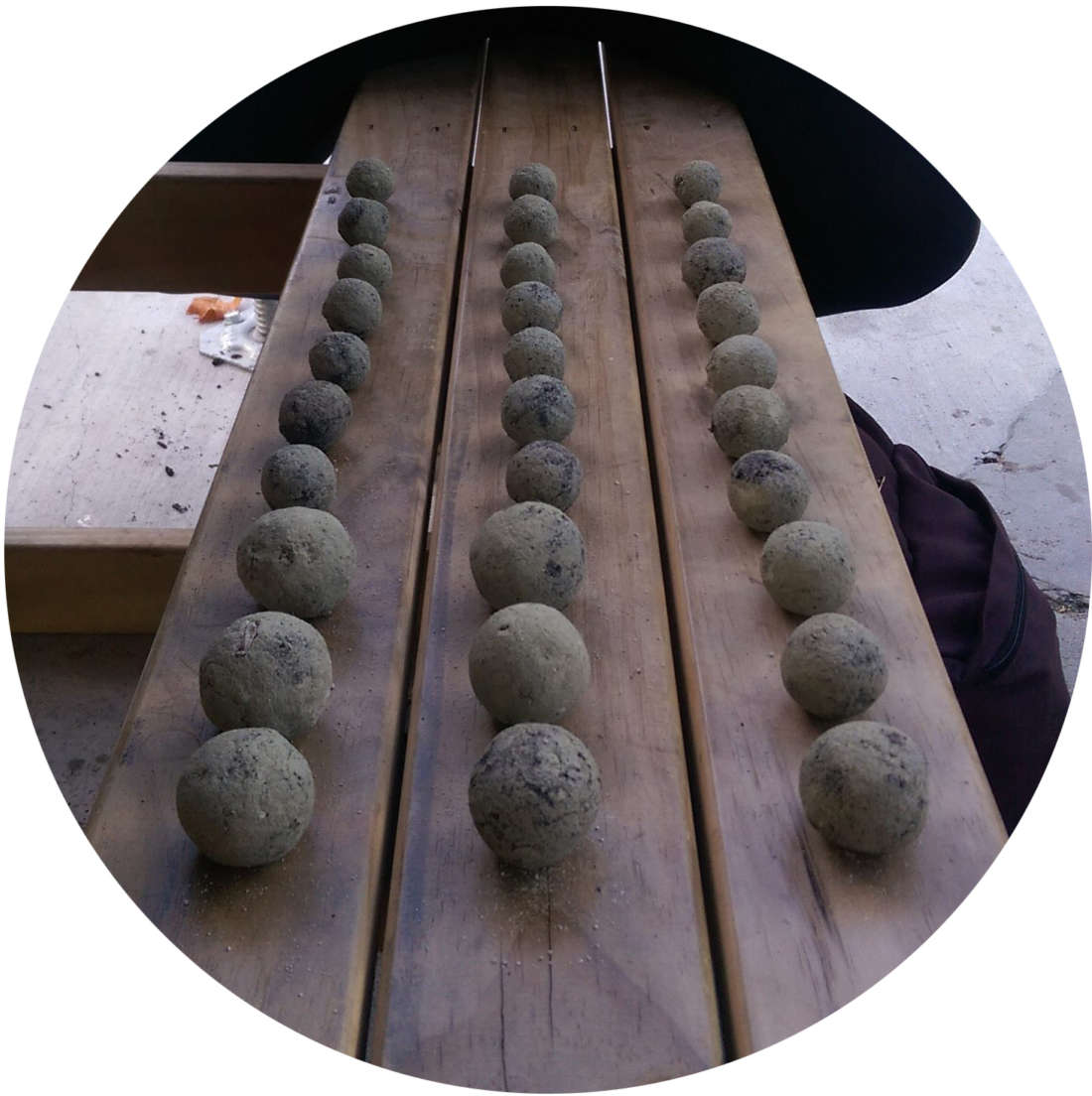Category — DIY

Clay seed balls – à la seed truffles
Food for Soil, Bugs, Plants, Humans.
The clay seed ball has been used for thousands of years as an effective tool and technique for the growing of agricultural crops and re-greening large areas of land. In recent times, they have been popularised through the Guerrilla Gardening movement. Seed balls are especially well known through Masanobu Fukuoka, a permaculture father figure who used them to naturally farm record breaking yields of rice on his organic farm.
They are cheap, easy, fun and you can make them with any type of seed from pumpkin and tomato, to wildflower and New Zealand natives. What follows is a recipe and a guide so that you can make your own seed balls to bring abundance, food and life to your local ecologies.
Ingredients
5 parts sieved organic compost
2 parts clay
1 part seeds
Water
A container for mixing the ingredients
Before you get started, there are a few things to consider when selecting your compost, clay and seeds. It is good to think of each seed ball as a miniature ecosystem. So the more biologically active your compost is, the stronger your seed balls will grow. If you have access, add composted manure or vermipost to your mixture. Mycorrhizal fungi could also be mixed in with your water to help the young seedling roots establish themselves.
You can use powdered clay or you can dig clay from somewhere you’re confident it won’t be contaminated. If you are digging your own clay, soak it in a bucket of water for one week until it separates, then pour off the water and mix the bottom layer into a goop with your hands.
You can use any seeds you like, generally it is good to use hardy species that will grow in a wild manner. I like to do a mix of annuals and perennials, so that the faster growing annuals will produce shade and mulch, creating ideal conditions for the slower germinating perennials to sprout up beneath them.

Method
Add 5 parts sieved compost, 2 parts clay and 1 part seed into a container and mix together, tentatively adding splashes of water until the mixture begins to hold the consistency of a truffle. It should be malleable enough to be rolled into a ball. If it is too gloopy then add more dry sieved compost or powdered clay.
Take one ball and squish it between two of your fingers. If it crumbles apart and collapses then add more clay to your mixture. If it holds together like blu-tack, then move on to the next step.
You can roll your seed balls into whatever size you want. I have found the most efficient and effective size is around 2cm in width. Making them bigger will not equate to more plants growing. If you want to incorporate larger seeds (broadbeans, lupins, pumpkins) then these should be pushed into the balls individually while rolling them.
Place seed balls on a tray and set aside in a warm, dark and dry place. We don’t want any seeds to germinate prematurely, so be sure to leave them for at least one week to dry and then place in (labeled) paper bags. They can either be used immediately or stored for up to two years.
From this point onwards they can be thrown into a vacant lot or roadside verge, lobbed out onto your neighbor’s freshly sown grass lawn (jokes), or placed into your garden bed. They are designed to be activated by the elements – the wind, rain, heat and cold – and hence will not work well growing in a greenhouse.
Use them outside. Gift them, observe them, learn from them and enjoy them.
Follow Levi on Instagram @insta_abundance to hear about future workshops
or email him levi.brinsdonhall@gmail.com if you would like to know more.